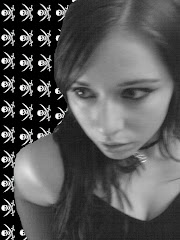Fargo
Directed by: Joel Coen
Written by: Joel and Ethan Coen
Released: 1996 USA
Mise-en-Scene
The use of setting in Fargo symbolises the isolation the characters feel, especially Jerry, the main character. The large, flat, snow covered landscape is set in Minnesota, and the use of the flat land allows the viewer to see the set from its far angles, allowing people and cars come into focus. However, the lack of said cars and people show how alone and segregated from the rest of the world Jerry and the kidnappers feel.
The lack of non-diagetic music within this film also has a profound effect. The most pronounced sounds are diagetic ones, such as the common occurrence of the phone ringing. The effect of this is that the spectators are able to feel more closely involved with the characters, and can become more involved with the story.
The colour red is used commonly throughout the film. Red connotes danger, blood, pain and death, and this is fully exploited for the mise en scene. As the kidnappers are driving away, they get pulled over by a police car. This is shown by the diagetic sirens and the mass of red light that floods the car from behind. He then shoots the police man, and consequently the white snow is splattered with red. As another car, with two people in, see what they have done, the meaner of the accomplices turns the car around to follow the two red lights from the escaping car. He looses sight of the car and only regains it when his own car floods with red again because the escaped car has turned over to the side. The young boy who then runs from the car is wearing a bright red jumper, and stubbles across the snow trying to get away. He then splatters the snow with red himself as he gets shot, as does the young girl in the car.
The symmetry in the film is repeated with this gesture. Both criminals die by gun whilst trying to cross the snow, as the young boy did. They both stumble on the snow as he did, and spray the white set with red. The repetition of red is circled off by the red light from the police car at the end that comes to arrest the remaining criminal. The police woman receives all her phone calls whilst she is in bed with her husband, and as Jerry trys to escape at the end of the film, he attempts to crawl out the window as his wife attempted to when she was first kidnapped.
The use of costume helps the viewer to understand the characters in more depth. Jerry, for example, is placed in beige and fawn suits to imply his dull nature and outlook to the world. It is a comical point that such a dull character is the ‘mastermind’ behind the fake kidnapping, in order to swindle everyone out of almost one million dollars.
Small actions and phrases are used in the performances within Fargo to help viewers relate and understand the characters. Throughout the film Jerry’s performance is nervous and fidgety to show that he knows he is in over his head, as his scheme is not going according to plan. The word, ‘Yah’ is used commonly throughout the film to help set the setting. The writers also put this in to add self-humour to this American accent. Finally, the pregnant police woman is always eating. It is common knowledge that one should eat more if pregnant, but Coen uses this as a way of connecting the spectators to this character through introducing them to her quirks and personality traits, as well as a point of humour.
Fargo is extremely well made in terms of Mise en scene. I found the plot line slightly lacking and uninventive however, but enjoyed the film as a piece of cinema (if not so much a piece of entertainment). It is worth seeing if you enjoy simple film noir or gangster films, but cannot be held next to the likes of Slightly Scarlet, Brick or Pulp Fiction.
Subscribe to:
Post Comments (Atom)

1 comment:
A good analysis. Well writtena nd your points are clearly made and supported. Good on use of symmetry, costumes, colour and landscapes. Also, the use of phrases and accents is worth mentioning. They are all part of setting and charcterisation. A thoughtful and reflective piece of work.
Post a Comment